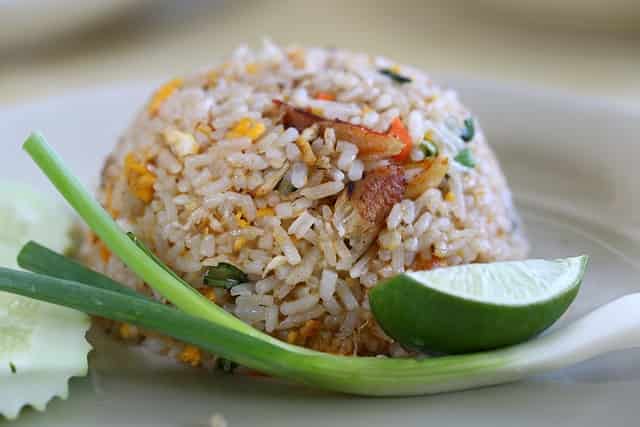Do you follow a gluten-free diet? Rice is a staple in most people’s diet but many types contain allergens. In this article we will tell you if rice is gluten free and talk about different types of gluten-free rice.
Does Rice Have Gluten?
Rice is naturally gluten-free. All forms of rice are naturally gluten-free. This includes white, brown and red varieties. However, it can be contaminated by gluten during processing and manufacturing. Therefore, if you are sensitive to gluten, it is important that you buy only certified gluten-free rice products.
Types of Gluten-Free Rice
Rice is a gluten-free grain. It’s also the most common cereal grain in the world, with about 3 billion metric tons produced annually. Rice can be processed into white rice, brown rice, parboiled rice and more than 100 other varieties of rice products.
- Wild rice
Wild rice does not contain gluten because it comes from its own plant species, known scientifically as zizania aquatica. However, wild rice can be contaminated with other grains during farming practices and processing at mills where multiple types of grain are processed together.
- White rice
White rice has no gluten in it and can be safely eaten by people with Celiac disease or wheat allergies. Brown rice also contains no gluten, but it does have more nutrients than white rice because it is higher in fiber and B vitamins.
- Brown rice
Brown rice is the whole grain version of white rice and has been shown to be a good source of fiber and magnesium. The downside is that brown rice is higher in calories and carbohydrates than white rice. It also contains phytic acid, which can interfere with the absorption of iron, zinc, calcium and magnesium.
- Black rice
Black rice is a type of long-grain rice that’s rich in nutrients and flavonoids. It’s also known as forbidden rice, because it was once reserved for royalty in China. Black rice has a nutty flavor and chewy texture, similar to short-grain brown rice. Black rice is gluten free.
- Red rice
Red rice is a type of long-grain rice that’s actually a little bit sweet and nutty in flavor. The red coloration comes from its bran layer, which has more nutrients than white rice. Red rice is gluten-free. Red rice is a reddish-brown, short-grain rice. It is popular in Asian cuisine. It was once reserved for emperors and high-ranking officials in China and Japan.
- Sprouted brown rice
Sprouted brown rice is an interesting option that some people choose over regular brown rice because it’s easier to digest due to its lower content of phytates. Sprouted brown rice can reduce the amount of prolamins in brown rice. However, it does not eliminate them entirely. Therefore, sprouted brown rice is not considered suitable for people with celiac disease or non-celiac gluten sensitivity.
Types of Rice That Are Not Considered Gluten-Free
Rice is one of the most popular grains in the world, but it’s not always the best choice for people with gluten intolerance or celiac disease. Rice is naturally gluten-free, but it can become contaminated with gluten during processing. If you’re on a strict diet and eat only certified gluten-free foods, you should avoid eating all forms of rice unless they’re certified as being completely free of all traces of gluten.
- Sushi Rice
Sushi is a traditional Japanese dish consisting of small balls or rolls of vinegared rice topped with raw seafood or vegetables, cooked egg, or other ingredients. Sushi may also refer to any dish made with seasoned vinegar-flavored cold cooked rice (sushi-meshi). It is not considered a complete gluten-free food.
- Boiled Rice
Boiled rice is a grain that has been boiled in water until soft and served as a side dish or as an ingredient in another dish such as fried rice. There are many different types of boiled rice that vary by shape, color and size depending on how they were grown and when they were harvested. Sometimes boiled rice can contain some amount of gluten because of reused dish.
- Precooked Rice
Precooked rice is sold in frozen bags or boxes, as well as in cans. The contents are often mixed with other ingredients, such as vegetables or meat. The process of making precooked rice involves cooking the grains before packaging them for sale. This can be done by steaming, boiling or poaching the grains until they are tender but still firm. Because of that it contains some amount of gluten.
- Flavored Rice Mixes
Some flavored rice mixes are gluten-free. However, some brands may contain wheat flour as an ingredient. This means they aren’t safe for people with celiac disease or non-celiac gluten sensitivity (NCGS). Wheat flour is derived from wheat berries which contain gluten proteins that can trigger digestive problems.
Conclusion
Rice is gluten-free, but even though it does not contain gluten itself, it is often found in products that do. It is therefore important for people who have a wheat allergy to find out exactly which ingredients rice has been used in.

